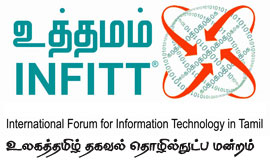How to Apply
HOW TO APPLY
Short application checklist:
- Read the links and instructions given on this page (IDEAS LIST) — All of it! we’ve tried to give you all the information you need to be an awesome GSoC applicant. Learn more about INFITT here our activities and history.
- Choose a project. Applications not associated with a project typically get rejected. Our list of projects are the following:
- Talk with your prospective mentors about what they expect of GSoC applicants and get help from them to refine your project ideas. Listening to your mentors’ recommendations is very important at this stage!
- Prepare a patch for that project. Usually we expect GSoC contributors to fix a bug/develop new feature and have made a pull request (or equivalent). Your code doesn’t have to be accepted and merged, but it does have to be visible to the public and it does have to be your own work (mentor help is ok, code you didn’t write is not).
- Write your application (with help from your mentors!) We are a first time mentoring organization; so we recommend using a template from the Python organization (2019 application template is available here). All applications must go through Google’s application system; we can’t accept any application unless it is submitted there.
- Use a descriptive title and include your sub-org name in Google’s system. Good example: “Mailman: Improve archive search” Bad example: “My gsoc project”
- Make it easy for your mentors to give you feedback. If you’re using Google docs, enable comments and submit a “draft” (we can’t see the “final” versions until applications close). If you’re using a format that doesn’t accept comments, make sure your email is on the document and don’t forget to check for feedback!
- Submit your application to Google before the deadline. We actually recommend you submit a few days early in case you have internet problems or the system is down. Google does not extend this deadline, so it’s best to be prepared early! You can edit your application up until the system closes.
Tip
Communication is probably the most important part of the application process. Talk to the mentors and other developers, listen when they give you advice, and demonstrate that you’ve understood by incorporating their feedback into what you’re proposing. We reject a lot of applicants who haven’t listened to mentor feedback. If your mentors tell you that a project idea won’t work for them, you’re probably not going to get accepted unless you change it.
What goes in an application?
An ideal application will contain 5 things:
- A descriptive title including the name of the project you want to work with (if this is missing, your application may be rejected!)
- Information about you, including contact information.
- Link to a code contribution you have made to your organization. (Usually this is a link to a pull request.)
- Information about your proposed project. This should be fairly detailed and include a timeline.
- Information about other commitments that might affect your ability to work during the GSoC period. (exams, classes, holidays, other jobs, weddings, etc.) We can work around a lot of things, but it helps to know in advance.
GETTING IN TOUCH
Please note that INFITT has a Community Code of Conduct and mentors and contributors working with the PSF are asked to abide by it as members of the Python community.
Mailing Lists.
Sign up to the kanittamiz mailing list to get updates, reminders, and to discuss questions. Please join the list before you send a message!
The most common questions are answered here:
IRC / Live chat
Not available at the moment
EMAIL Contact
You can reach the Google summer of code administrator at the email ID: gsoc@infitt.org
Specific Projects
We will share the contact information of the mentors within the ideas page.
